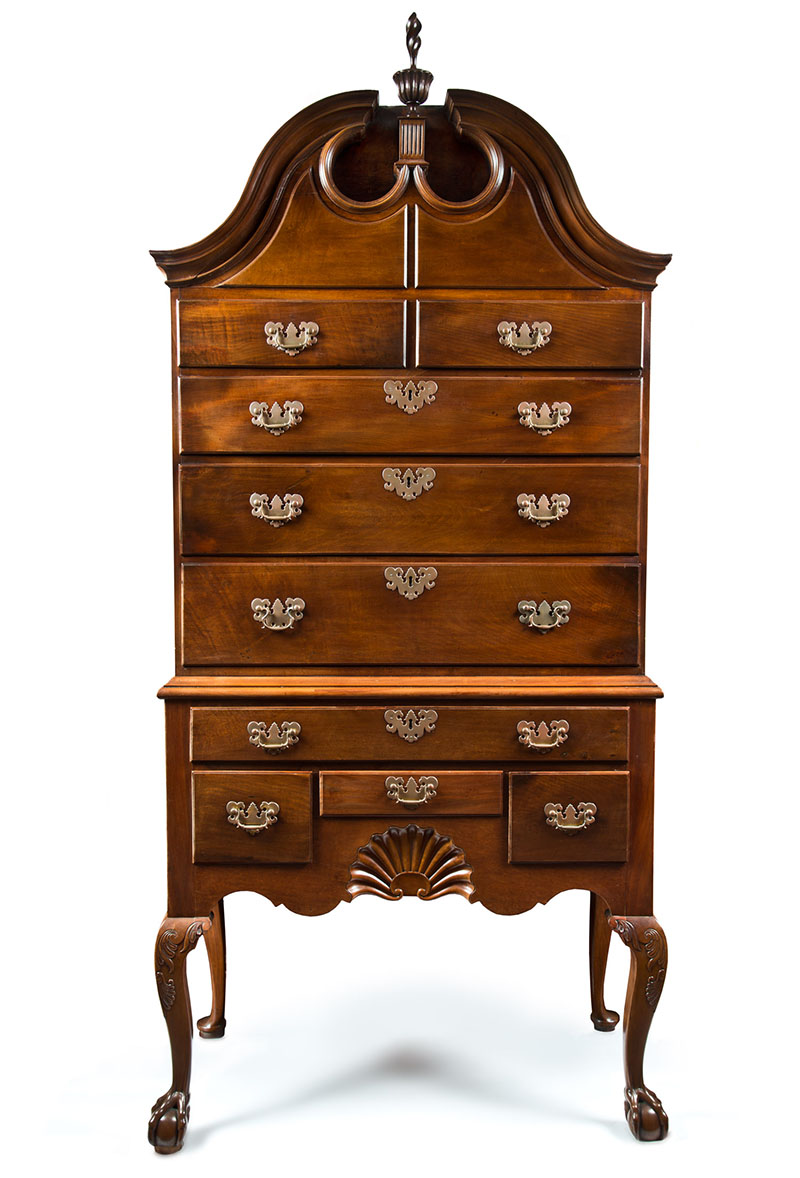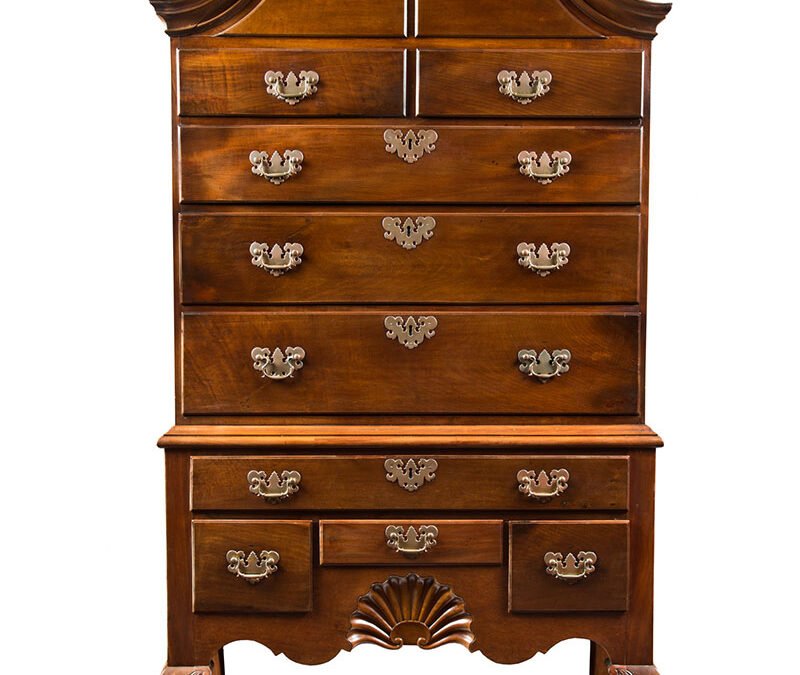High Chest

| Maker | Attributed to the Townsend-Goddard Workshops |
| Date of Creation | c. 1760 |
| Location | Newport, Rhode Island |
| Materials | Mahogany, poplar |
| Institution | The Preservation Society of Newport County |
| Credit Line | Gift of Mr. and Mrs. David Stockwell |
| Accession Number | PSNC.1714a-b |
| Photo Credit | The Preservation Society of Newport County |
This beautifully carved mahogany high chest (or highboy) is attributed to the illustrious Townsend-Goddard workshops of Newport, RI. It descended in a Maryland family whose ancestors purchased it in 18th-century Baltimore. The highboy is believed to have been made in Newport and sent as venture cargo to Baltimore during the 1760s. Among the many Newport characteristics of the highboy are its four detachable legs, an innovation of Rhode Island furniture. Detachable legs made the highboy easier to ship and suggest the significance of the export trade in Newport. Newport furnituremakers are known to have sent high-style wares to Colonial coastal centers including Annapolis, New York, and Charleston. Additional characteristics mark the highboy as Newport-made, including the use of cabriole legs with pad feet at the rear in combination with ball-and-claw feet on the front legs; the elongated appearance of the ball-and-claw feet with webless talons; intaglio carved petal and leaf decoration on the knees; and the closed bonnet top above a tympanum of protruding, twin raised panels, a tradition of the Townsend-Goddard cabinetmakers. The focal point of the high chest is a strongly carved shell with alternating convex and concave lobes on the lower section. The shell motif is perhaps the most recognizable hallmark of Newport cabinetmakers. It celebrated Newport’s thriving maritime trade at a time when the city was a bustling seaport in the British Empire. Much of the city’s maritime wealth derived from the slave trade. Newport was the leading slave port in British North America in the mid-18th century. Large numbers of Africans and African Americans were also enslaved in Newport, including by the Townsend-Goddard family. These men may have worked in the furniture trade.

